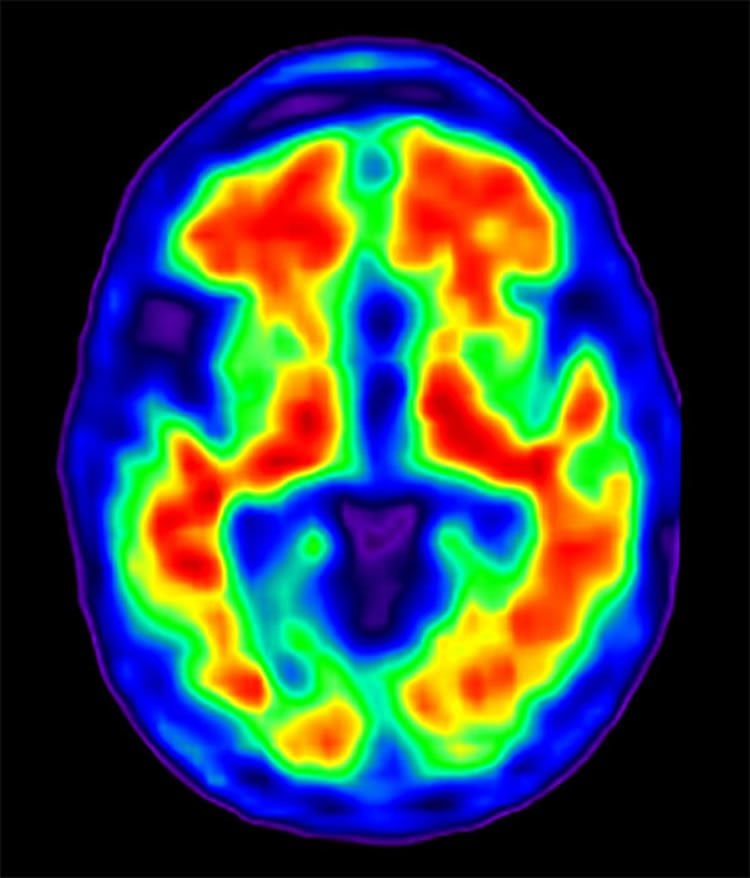Summary: A new study may provide key insights into the risk of developing Alzheimer’s disease. Researchers report people with higher levels of amyloid beta showed less activity in brain areas associated with working memory when engaged in cognitively demanding tasks.
Source: UT Dallas.
Slightly elevated beta-amyloid levels in the brain are associated with increased activity in certain brain regions, according to a new study from the Center for Vital Longevity (CVL) at The University of Texas at Dallas.
But that increase in activity might not be such a positive thing. The results indicate that the brains of these individuals may be working harder or recruiting more cognitive resources to complete tasks than those with lower levels of beta-amyloid, the main component of amyloid plaques, the study authors said.
The new research, published in the journal NeuroImage, offers a window into when these increasing levels of beta-amyloid, widely known as a risk factor for Alzheimer’s disease, might reach tipping points in the brain, when regions crucial to memory begin behaving differently. Such points might foreshadow important milestones in the disease process.
Study author Dr. Chris Foster, a postdoctoral researcher at CVL, explored a new way to interpret discrepancies found across functional magnetic resonance imaging studies that show increased and decreased brain activity amid varying beta-amyloid levels.
Subjects with slightly elevated levels of beta-amyloid exhibited more activity in brain regions involved in working memory as they engaged in a cognitively demanding task, Foster found. But in individuals with even higher levels of the protein fragment, there was a return to lower activation during the demanding task, showing levels of brain activity that were more like those in people with very little amyloid — a process the authors call “pseudonormalization.”
In all, participants in the study included 62 healthy adults from ages 51 to 94. Although the study is cross-sectional, rather than following the same individuals over time, this novel research offers a step toward better determining when in their lifespan an individual with rising levels of beta-amyloid might experience changes in the way the brain operates. A better understanding of these subtle shifts in brain function could lead to new insights into how Alzheimer’s disease progresses and possible ways to diagnose it earlier.
“While there may be no outward sign of memory impairment, and no behavioral manifestations of memory issues early on, it is important to understand subtle shifts in the way the brain is functioning in order to understand the disease process with the hope of intervening before it is too late,” said Foster, who works in the lab of Dr. Karen Rodrigue, an assistant professor in the School of Behavioral and Brain Sciences.

In addition to Rodrigue as the corresponding author, other CVL scientists on the research paper are Dr. Kristen Kennedy, assistant professor; and doctoral students Marci Horn and David Hoagey.
“This work will likely prompt those in the field who are specifically looking for markers or milestones of when the brain transitions between different activation levels, to re-evaluate some of their data,” Kennedy said.
Prior to the study, Foster said he considered evidence that suggests a change from increased to decreased brain activity actually might occur in the transition from mild cognitive impairment to Alzheimer’s disease.
“The hyper-activation we saw in some people seems to be the result of the excitatory effects of amyloid, at least initially,” Foster said. “As amyloid accumulates even further, it may act to then dampen the activity, at which point cognition may begin to exhibit subtle changes.”
Funding: The research was funded by National Institutes of Health and an investigator-initiated trial grant from Eli Lilly and Company for the Amyvid ligand.
Source: Alex Lyda – UT Dallas
Publisher: Organized by NeuroscienceNews.com.
Image Source: NeuroscienceNews.com image is adapted from the UT Dallas news release.
Original Research: Abstract for “Both hyper- and hypo-activation to cognitive challenge are associated with increased beta-amyloid deposition in healthy aging: A nonlinear effect” by Chris M. Foster, Kristen M. Kennedy,Marci M. Horn, David A. Hoagey, and Karen M. Rodrigue in NeuroImage. Published April 2018.
doi:10.1016/j.neuroimage.2017.10.068
[cbtabs][cbtab title=”MLA”]UT Dallas “Brain Activity Study Offers Potential Insight into Alzheimer’s Disease.” NeuroscienceNews. NeuroscienceNews, 16 April 2018.
<https://neurosciencenews.com/alzheimers-brain-activity-8803/>.[/cbtab][cbtab title=”APA”]UT Dallas (2018, April 16). Brain Activity Study Offers Potential Insight into Alzheimer’s Disease. NeuroscienceNews. Retrieved April 16, 2018 from https://neurosciencenews.com/alzheimers-brain-activity-8803/[/cbtab][cbtab title=”Chicago”]UT Dallas “Brain Activity Study Offers Potential Insight into Alzheimer’s Disease.” https://neurosciencenews.com/alzheimers-brain-activity-8803/ (accessed April 16, 2018).[/cbtab][/cbtabs]
Abstract
Both hyper- and hypo-activation to cognitive challenge are associated with increased beta-amyloid deposition in healthy aging: A nonlinear effect
Beta-amyloid (Aβ) positive individuals hyper-activate brain regions compared to those not at-risk; however, hyperactivation is then thought to diminish as Alzheimer’s disease symptomatology begins, evidencing eventual hypoactivation. It remains unclear when in the disease staging this transition occurs. We hypothesized that differential levels of amyloid burden would be associated with both increased and decreased activation (i.e., a quadratic trajectory) in cognitively-normal adults. Participants (N = 62; aged 51–94) underwent an fMRI spatial distance-judgment task and Amyvid-PET scanning. Voxelwise regression modeled age, linear-Aβ, and quadratic-Aβ as predictors of BOLD activation to difficult spatial distance-judgments. A significant quadratic-Aβ effect on BOLD response explained differential activation in bilateral angular/temporal and medial prefrontal cortices, such that individuals with slightly elevated Aβ burden exhibited hyperactivation whereas even higher Aβ burden was then associated with hypoactivation. Importantly, in high-Aβ individuals, Aβ load moderated the effect of BOLD activation on behavioral task performance, where in lower-elevation, greater deactivation was associated with better accuracy, but in higher-elevation, greater deactivation was associated with poorer accuracy during the task. This study reveals a dose-response, quadratic relationship between increasing Aβ burden and alterations in BOLD activation to cognitive challenge in cognitively-normal individuals that suggests 1) the shift from hyper-to hypo-activation may begin early in disease staging, 2) depends, in part, on degree of Aβ burden, and 3) tracks cognitive performance.






